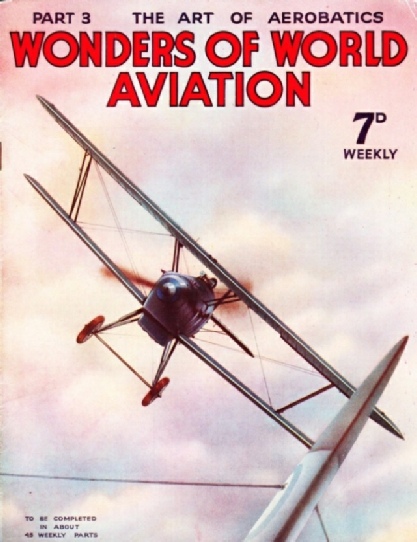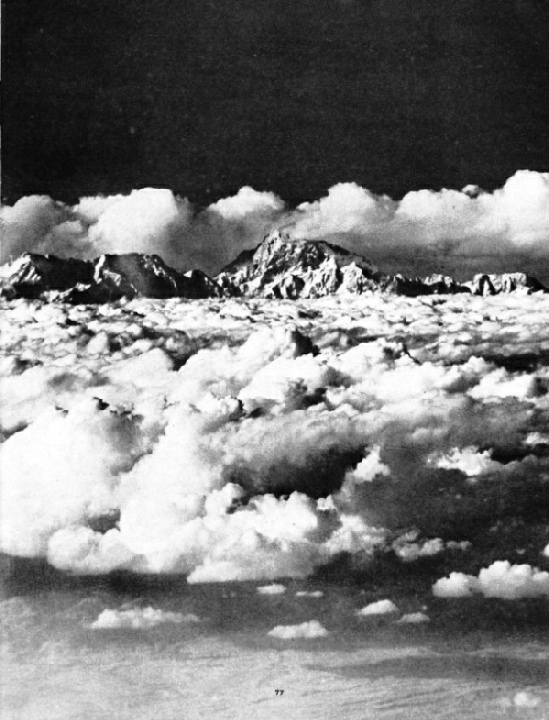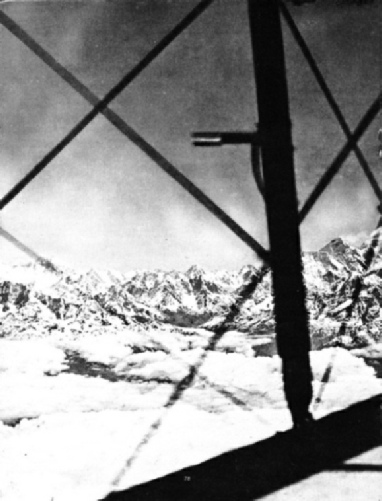
© Wonders of World Aviation 2015-


Part 3
Part 3 of Wonders of World Aviation was published on Tuesday 22nd March 1938, price 7d.
This part included a central photogravure supplement showing the flight over Mount Everest which illustrated the article Over Everest By Air.
The Cover
There are no editorial notes about this cover, which shows a biplane performing aerobatics.

Contents of Part 3
Round the World in Eight Days (Part 2)
The story of the Winnie Mae, a small monoplane in which the late Wiley Post and Harold Gatty flew round the world in eight days sixteen hours. This chapter is concluded from part 2.
It is the first article in the series Great Flights.
The Art of Aerobatics
Aerobatics are the airman’s punching bag; they make him fit to fly and they keep him fit to fly. Aerobatics provide valuable aid in the perfection of flying technique, and no pilot can reach the highest point of flying skill without a full knowledge of the art.
The idea of flying over Everest had attracted many pilots, but for long their ideas remained mere dreams. No engine was capable of lifting an aeroplane to such an altitude in such conditions. The day came, however, in 1932, with the production of the first models of a new experimental engine -
This the second in the series on Great Flights.
Homing Radio
A form of directional radio known as “homing radio” has been developed for use in aircraft, and on introduction was termed the Marconi-Robinson Homing System. It derives its name from the attributes of the homing pigeon.
The Father of British Aeronautics
The first scientist who paid serious attention to the problems of mechanical flight and who tried to explain in mathematical terms the fundamental principles of mechanical flight was Sir George Cayley (1773-1857). His interest in aeronautics was inspired in his boyhood by the Montgolfiers’ achievements with the balloon.
This chapter is the second article in the series on Makers of Air History.
The Sizes of Civil and Military Aircraft
The sizes of civil and military aircraft vary considerably according to the purposes for which they are designed. For purposes of comparison, examples of some of the main types are given in as diagram, which shows the plan and elevation drawn to scale. Approximate dimensions in feet can be ascertained by reference to the scale in the top right-hand corner of the diagram.
The Caterpillar Club (Part 1)
Every member’s life has been saved by a parachute. The Caterpillar Club is a fraternity of about 1,700 men and a few women, of many nationalities, whose lives have been saved by the Irvin Air Chute. It is not a club in the normal sense of the word, as the members do not meet for social occasions. There are no fees, no rules and no headquarters. The only tangible sign of the club’s existence is a gold pin bearing a caterpillar design. This chapter is concluded in part 4.
Over Everest By Air
Photogravure Supplement
INFRA-RED PHOTOGRAPH of the peak of Makalu taken from more than a hundred miles away. The summit of Everest was concealed behind a bank of cumulus clouds. The photograph was taken during the second flight to Everest on April 19, 1933.
Over Everest By Air: Photogravure Supplement - 2
APPROACHING EVEREST on April 19, 1933. The long plume, known as the rafale, distinguishes the summit of Everest. The peak of Makalu, which is twelve miles from Everest, can be seen behind the rear wing strut. The angle of the wings shows the strength of the drift due to a high wind velocity of about 110 miles an hour. The clouds are at a height of 18,000 feet.
Over Everest By Air:
Photogravure Supplement - 3
OVER THE SOUTHERN PEAK, about three minutes’ flight from the summit of Everest. The photograph was taken from the Westland Wallace, and shows the Houston-Westland aeroplane. A thick blanket of cloud which stretched to within about fifteen miles of the foot of Everest prevented measurement of the drift. The aeroplanes were thus carried farther west than had been intended.



